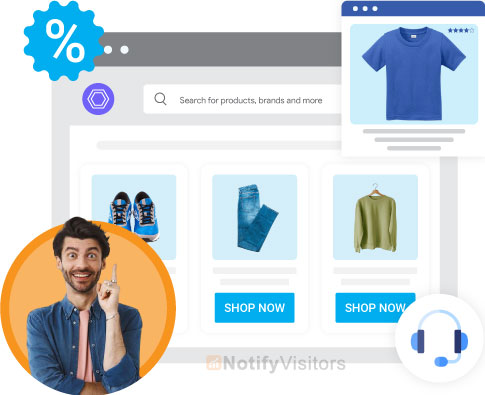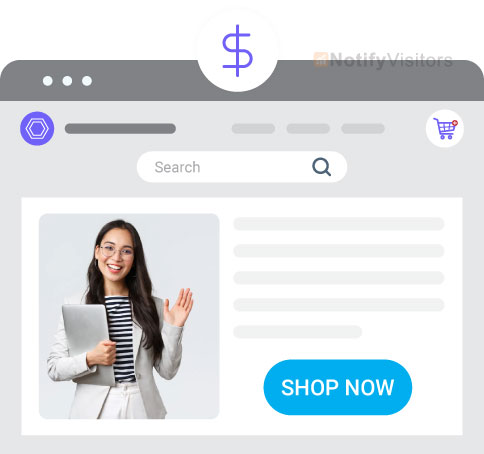A thrilling venture, especially if you’ve fantasized about the independence of being your boss, is to start an eCommerce business. The entrepreneurial path can be a fantastic fit for you if you are talented in crafts or have a passion for marketing.
It takes a lot of effort to get a business off the ground. To take the necessary actions to market your concept, you need business sense, creativity, and discipline. But the voyage itself may be incredibly worthwhile and fruitful.
According to the U.S. Census Bureau, global eCommerce sales were close to $5.5 trillion in 2022, and 14.3% of all sales were made through e-commerce. E-commerce has tremendous possibilities for financial gain.
Starting an eCommerce business is a challenging task. You can have the best product in the world, but you need to learn how to market it with the help of a social media scheduler. That’s why we’ve created this step-by-step guide to help you create and sell your products online.
In this article, we’ll walk through each step of starting an eCommerce business: establishing your brand and determining what platform to use to acquire inventory and accept payments online. By following these steps you’ll be on your way toward starting a successful eCommerce store.
How to start an eCommerce business
Establishing an e-commerce business differs noticeably from starting a brick-and-mortar business, but several commonalities exist. Many planning and legal processes you’ll need to take will be similar to those of any other business, as we’ll cover in greater detail below. Additionally, when you hire expert ecommerce developers, you can ensure that your online store is set up efficiently and effectively on a robust B2C ecommerce platform.
However, once you’re ready to launch your business, you’ll realize how different launching an online store may be. Also if you are planning to start an LLC make sure to create your LLC operating agreement for each member of your LLC. This article provides a step-by-step guide to understanding eCommerce business models:
Contents
Step 1: Find Your Idea

The first step in creating an eCommerce business is to find your idea. There are many ways to find ideas, but let’s start with some of the most common methods:
- Passion – What are you passionate about? Do you have a hobby that could turn into a business? Maybe it’s cooking, photography, gardening, or another activity. It doesn’t matter what it is as long as it sparks an interest within you and there is a need for others worldwide too!
- Product Need – Finding a product that has a need will help attract customers and make them return for more. Try looking at Amazon’s best-sellers list to see where people spend money on products (and which ones they don’t).
- Problem Solving – People are always looking for solutions to problems. You could find a way to solve many people’s problems and make it easy for them. This can be anything from organizing their garage to helping people lose weight faster with fitness equipment.
Step 2: Choose Your Niche
After you’ve chosen a product to sell, the next step is deciding on your niche. A niche is a market segment or category of products that you will focus on selling. You can choose one of two niches:
- Product niche – Choosing a specific type of product to sell (i.e., mens tuxedo suit).
- Market niche – Choosing a group of people interested in an item (i.e., women who love designer handbags).
While many successful businesses have been built around one item, most eCommerce businesses will likely be built around multiple items under the same theme or brand name. Try to be specific and unique, so other shoppers know what they can expect when shopping with you! As you lay the groundwork for your eCommerce venture, consider starting an llc to ensure your business is legally compliant and to protect your personal.
Step 3: Research e-commerce models and decide what to sell.

The e-commerce industry nowadays is enormous, with plenty of competitors; therefore, it is critical to analyze your e-commerce business plan. There are four fundamental kinds:
- Business-to-customer (B2C): A typical business strategy where a company sells products to customers, such as spices or shoes. B2C businesses, like Amazon, Walmart, and Alibaba, can sell various brands under one roof.
- Business-to-business (B2B): Businesses offer goods and services to other businesses under B2B models. Orders frequently involve repeat purchasing. Rakuten, Alibaba, Amazon Business, and selling on Amazon B2B are a few examples.
- Customer-to-customer (C2C): Online marketplaces that link consumers to trade and sell goods and services are typically used in C2C models. Online C2C companies like Craigslist, Etsy, and eBay are available.
- Customer-to-business (C2B): In a C2B transaction, people provide their products and services to businesses. Upwork, which enables companies to recruit independent contractors, is a good example.
Step 4: Write a business plan
You’re prepared to create a business strategy once you’ve laid the groundwork. This document outlines your goals and operations, finance, and marketing path. After that, you can utilize it to organize yourself and draw in possible investors. This is the AI era, if you don’t know how to write a business plan worry not, some AI-powered business plan generators can help you prepare a business plan, it can write business plan sections for you.
Step 5: Deal with the legal stuff
Once you’ve determined the right products to sell, it’s time to decide how best to structure your business.
- Sole proprietorship: A sole proprietorship is the simplest type of business entity and requires no formal paperwork or government filings. In this structure, you are both the owner of the business and its principal operator. This can be good for keeping costs low when starting since there are no fees associated with registering your company. Additionally, pre seed funding can provide crucial initial capital to cover early expenses without depleting personal savings or taking on significant debt.
- Partnership: If multiple people share ownership or control over a company, they may choose to form a partnership. Partnerships don’t need any unique forms filed with state authorities; however, partnerships must file an informational return annually called Form 1065 (U.S.). The individual partners report their share of income on their tax returns each year.
- S corporation: An S corporation combines some elements of both corporations and partnerships by granting shareholders certain tax breaks but not giving them a direct ownership interest in the company itself.
- LLC: A limited liability company (LLC), for example, LLC in Texas, is a type of corporate structure used in the US that prevents you from being held personally liable for the obligations of the company you own. Limited liability companies are hybrid legal entities with traits shared by corporations, partnerships, and sole proprietorships. There is a cost associated with this structure. So, you must be aware of how much an LLC costs.
Step 6: Apply for an EIN

You might also need to apply for an employer identification number (EIN), a type of tax identification, from the IRS. This is unnecessary if you are a lone proprietor and don’t have any staff.
However, you might still wish to obtain an EIN to keep your personal and business taxes distinct and to ensure that you can swiftly hire when the time comes to expand your business.
You can use the IRS’s helpful checklist to determine whether you’ll need an EIN to operate your firm. You can register for a free EIN online if you do.
Step 7: Build Brand Identity

When you start an eCommerce business, it is imperative to have a unique brand identity. Whether or not you’ve made any deliberate branding decisions, this is true for your business. Your company’s brand represents how consumers feel about and view it. As a first time entrepreneur, establishing a strong brand identity can set you apart from competitors and build trust with your audience.
This encompasses your company’s perceived mission and values, the goods and services you offer, and the methods you market. Consequently, your brand exists regardless of the choices you make.
However, your options in terms of branding can create the groundwork for a solid, reputable brand. So, consider these crucial inquiries:
- What are the values of my brand?
- What identity or personality do I want to express through my business brand?
- Can clients benefit from my goods or services they cannot obtain elsewhere?
- What aspect of my consumers’ experience is most crucial?
- Can clients obtain benefits from working with me that they cannot obtain elsewhere? Then what?
Your responses to these (and similar questions) will form the foundation of your brand. Consider them accordingly. Your company will use this core brand identity as a lighthouse, constantly pointing it toward your home identity and values, and building your brand’s loyalty. The core components of your brand identity are your company name, logo, and website layout.
Step 8: Find and acquire inventory for your eCommerce store
Next, you need to find and acquire inventory for your eCommerce store. This step is important because it can make or break your business. Three things are critical when buying inventory:
- Find the right supplier. You want to buy from a reliable supplier that provides good quality products at a reasonable price. Shop around and compare prices until you find one that works for you. Shipping is also important as according to NXT Point Dallas one reason why the cost is a significant shipping pain point is that it’s unpredictable or unclear.
- Buy in bulk whenever possible, especially if there is a discount on larger orders (especially if it’s more than 1000 units).
- Creating an eCommerce store is best for marketing your business but security is also an essential part for user trust. Integrating custom ecommerce development services is a strategic move to ensure your online store not only stands out with unique features but also provides a secure and seamless shopping experience for your customers. Additionally, leveraging AWS development services can enhance the scalability and reliability of your eCommerce platform, ensuring it can handle traffic spikes and provide a seamless user experience. Partnering with experts who specialize in custom solutions can elevate your eCommerce business to the next level, offering tailored functionalities that perfectly align with your brand and customer needs. Securing your eCommerce website with a cheap wildcard SSL certificate is the best way and you can get the SSL certificate from Trusted provider.
Step 9: Market your eCommerce store

Marketing is one of the most important parts to start an eCommerce business. If you don’t market well, no one will find your store, and it won’t sell anything. To start marketing your eCommerce store, think about who your target audience is. For example if you are a Helium 10 dealer you will be targeting your best Helium 10 Black Friday deals to only those buyers who want it and not waste money on displaying Ads to people who don’t even know what it is.
Once you’ve done this, ensure your marketing efforts reach those people by using a social media scheduler to schedule your post on different platforms. There are many different ways to do this:
- Social media ads on Twitter and Facebook
- Pay-per-click ads with Google AdWords
- Get reviews/testimonials from customers
- Create an email newsletter with useful information about your industry or products/services that they offer (don’t spam)
- Content marketing through blogs and written articles
Conclusion
Starting an eCommerce business may be overwhelming, but you can get through it one step at a time. Don’t try to do everything at once, and don’t worry about what other people are doing. Instead, focus on your own needs and how you can make them happen.
When you start an eCommerce business, you have to start by understanding who your customers are and what they need from their shopping experience.
You’ll pick up a tonne of knowledge on selecting a product, determining its viability, working out how to make it, setting up an internet store, and promoting with the help of social media scheduler and selling to potential customers quickly. It can feel like you’re solving a brainteaser of a conundrum during the process, but it’s still enjoyable.

























 Email
Email SMS
SMS Whatsapp
Whatsapp Web Push
Web Push App Push
App Push Popups
Popups Channel A/B Testing
Channel A/B Testing  Control groups Analysis
Control groups Analysis Frequency Capping
Frequency Capping Funnel Analysis
Funnel Analysis Cohort Analysis
Cohort Analysis RFM Analysis
RFM Analysis Signup Forms
Signup Forms Surveys
Surveys NPS
NPS Landing pages personalization
Landing pages personalization  Website A/B Testing
Website A/B Testing  PWA/TWA
PWA/TWA Heatmaps
Heatmaps Session Recording
Session Recording Wix
Wix Shopify
Shopify Magento
Magento Woocommerce
Woocommerce eCommerce D2C
eCommerce D2C  Mutual Funds
Mutual Funds Insurance
Insurance Lending
Lending  Recipes
Recipes  Product Updates
Product Updates App Marketplace
App Marketplace Academy
Academy

